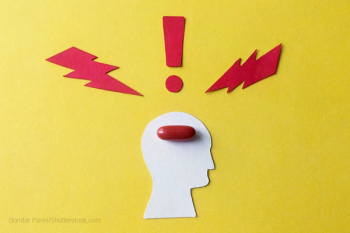
Dr Osser discusses 4 new algorithms to help improve your practice.

Dr Osser is an associate professor of psychiatry at Harvard Medical School; a psychiatrist at the Veterans Affairs (VA) Boston Healthcare System, Brockton Division; and codirector of the VA National Bipolar Disorders TeleHealth Program. He is also a Psychiatric Times editorial board member.

Dr Osser discusses 4 new algorithms to help improve your practice.

The psychiatric prescribing clinician may be called upon to treat pain comorbid with bipolar disorder.

David Osser, MD, comments on the low priority of valproate for treating patients with bipolar disorder.

Oxcarbazepine might be considered for patients who you want to treat with carbamazepine for mania (as monotherapy or adjunct) but for whom it would be unsafe or who have been unable to tolerate it.

There are some off-label proposed uses for topiramate in comorbidities that are common in patients with bipolar disorder. What does the evidence say?

Valproate/divalproex appears to be considerably overused in the US; the use of lithium, second-generation antipsychotics, and carbamazepine should be more prominent in treatment decisions for patients with bipolar mania.

Do you prescribe antidepressants for your patients with bipolar depression? If so, think again, and consider results from these studies.

Regardless of whatever short-term benefit patients perceive from cannabis, the evidence points clearly to an association between usage and worsening course of bipolar disorder over time.

Do you need help persuading patients to try lithium?

There appears to be some confusion regarding the efficacy of aripiprazole in bipolar mania and depression and for preventing bipolar episodes.

The good, the bad, and the efficacy of lamotrigine.

An international task force of experts in the diagnosis and treatment of bipolar disorder was recently convened to address concerns about DSM-5 criteria, particularly the definitions of manic episodes. The DSM’s duration criteria is an area of concern.

The evidence is clear: bipolar disorder is frequently both underdiagnosed and overdiagnosed.

Current estimates are that 4% to 5% of the population is at risk for a disorder on the bipolar spectrum. Among the patients of that spectrum are those with a disturbance of temperament in the direction of hypomania.

With a combined 70+ years of clinical experience, the authors discuss scenarios that represent two possible outcomes of discontinuing serotonergic antidepressants.

Dr David Osser offers compelling reasons why you might want to take a look at these 7 algorithms, each of which offers actionable consultations-usually in under 2 minutes.

Dr David Osser has chosen as one of the Top Papers of the Year a meta-analysis on second generation antipsychotics and the effects of these agents on patients with schizophrenia.

The field of psychopharmacology is evolving rapidly. New research and medications appear, and practice changes. This book was up-to-date when it went to press; however, it does not include the most recent findings from the CATIE, STAR*D study, and CATIE-AD study. There is no mention of paliperidone, intramuscular aripiprazole, selegiline transdermal system, varenicline, or depot inject- able naltrexone. One wonders whether books are becoming obsolete as a medium for communicating the state of the art.

Recent issues of Psychiatric Timeshad articles focusing on psychiatricpractice guidelines and algorithms. Dr Michael Fauman examinedthe extent to which they are used,how they are used, and studies that havevalidated their usefulness comparedwith usual care.